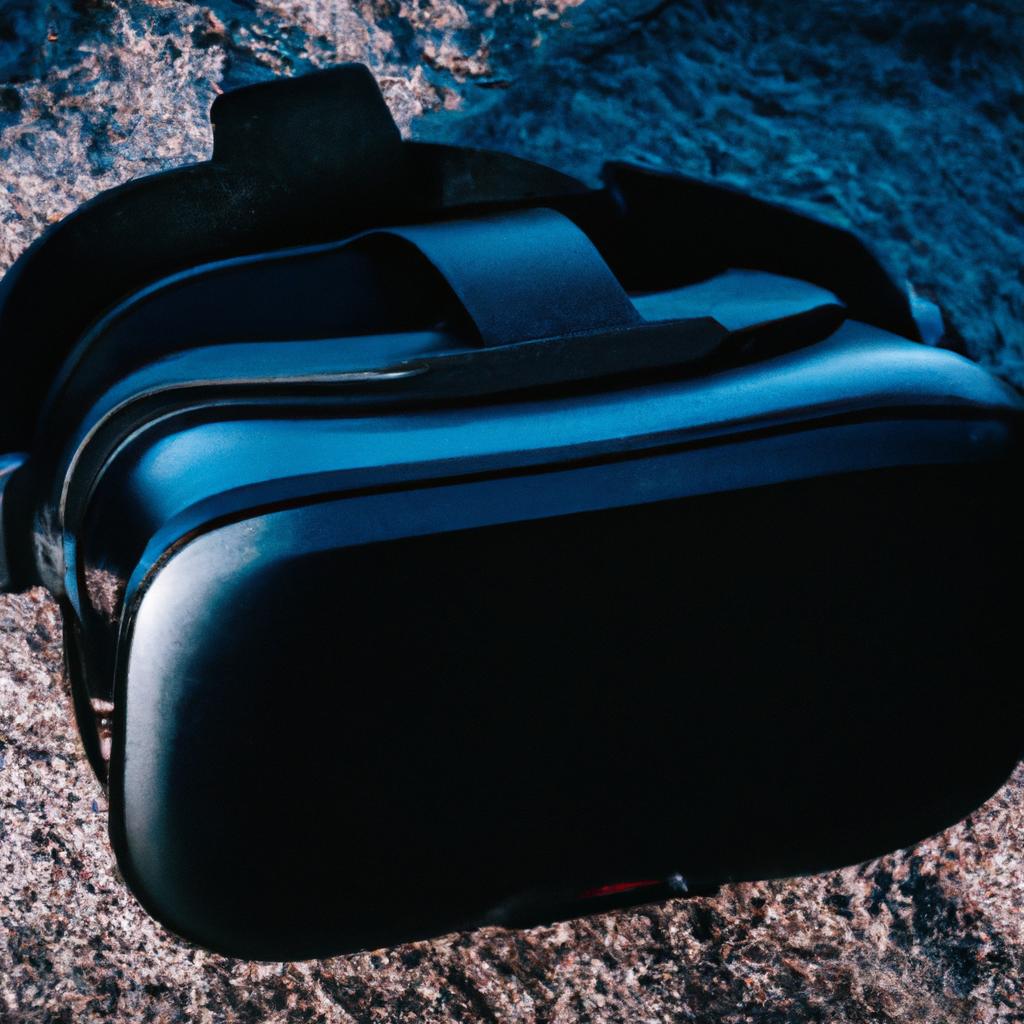Introduction
In the ever-changing and competitive business landscape, retailers are continuously on the lookout for ways to stay ahead of the curve. Fortunately, in the past few years, virtual (VR) and augmented reality (AR) technologies have emerged as valuable tools for them to do just that. VR and AR can not only enhance the customer experience and increase engagement, but they can also be used to break into new markets, drive consumer loyalty, and ultimately increase profits. This guide will provide an overview of VR and AR technologies, their historical progression in the retail environment, potential benefits, possible problems associated with implementation, necessary resources and strategies for engaging customers, methods of measuring return on investment, key summary points, and a glimpse at future trends related to VR & AR.
Overall, our goal is to provide readers a comprehensive guide on how VR & AR technologies can be effectively used within the retail industry. VR & AR solutions are beginning to be used more and more often, so understanding the potential of these technologies will be essential for any business looking to remain successful in the long term.
History of VR and AR in Retail
The retail industry has come a long way in terms of technology, particularly with the introduction of virtual reality (VR) and augmented reality (AR). In the past decade, these two technologies have opened up a world of opportunities for retailers looking to implement innovative ways to engage with their customers.
The development of VR and AR began in the late 1990s, but was not widely adopted until the mid 2010s. It wasn’t until 2014 that the first large-scale commercial application of VR and AR was launched in retail. This was an interactive experience within brick and mortar stores that allowed customers to virtually experiment with different products.
Since then, the use of VR and AR technologies in retail has grown exponentially. In 2017, brands began to experiment with VR shopping experiences facilitated by headsets and mobile applications. An example of this is Sephora, which launched a virtual try-on experience for makeup. In 2018, the rise of AR technologies saw major advancements in product visualization and customer engagement.
The most recent developments in VR and AR have opened up entirely new channels for retail brands to reach customers. Innovative strategies such as virtual brand ambassadors and online product demos are showing great promise for potential customer acquisition and retention.
Benefits of VR and AR for Retailers
The introduction of virtual reality (VR) and augmented reality (AR) technologies into the retail industry offers a myriad of advantages and opportunities for businesses. VR and AR technology can create immersive experiences that have the potential to turn everyday shopping moments into unforgettable events. This can help retailers stand out in an increasingly competitive market. There are also cost-saving benefits, as these technologies often reduce marketing and advertising expenses while providing a more targeted approach.
These technologies can provide customers with comprehensive product information, and a more detailed understanding of the products they are considering purchasing. This could lead to increased customer engagement and satisfaction as well as longer lasting relationships that increase the likelihood of return business. Using VR and AR technology, retailers can also offer engaging interactive experiences that bring customers back to the store in ways that may not have been possible before.
Another benefit of using these technologies is the ability to track customer behaviour. This provides valuable insights into customer preferences that allows retailers to optimize their strategy and target their offerings to meet individual customer needs. VR and AR technologies also enable retailers to personalize the shopping experience, creating a unique atmosphere that customers appreciate.
Finally, by utilizing VR and AR technologies, retailers can transform the in-store experience with interactive content that is engaging, informative, and tailored to the individual customer. These technologies also offer flexibility when it comes to presenting products in different ways, such as through virtual walkthroughs, 3D models, and dynamic digital displays of products.
Potential Challenges Associated with VR & AR
The implementation of VR and AR technologies in the retail industry is not without its challenges. There are certain obstacles that retailers must be aware of if they decide to invest in such technologies. The primary challenge associated with VR and AR systems is the cost. Such technologies can be expensive, especially for smaller businesses. Additionally, there may be hardware and software integration and compatibility between systems, so retail outlets must ensure that their chosen systems are compatible with each other.
Another issue retailers must consider is user privacy and security. As the technology continues to develop and increase in popularity, it becomes more important for companies to protect user data from hackers and malicious actors. This includes enforcing data encryption standards and user authentication protocols.
Finally, retailers must decide how best to use these technologies. It is important to remember that both VR and AR technologies need to be carefully planned and executed if they are to have a positive impact on customer experience. Without proper planning, retailers may struggle to utilize the technologies effectively and risk wasting both money and time.
In conclusion, although VR and AR technologies offer exciting opportunities, there are some potential challenges that retailers need to consider before investing in these systems. It is important for retailers to understand the full implications of such investments, both in terms of costs and potential risks, and put the necessary measures in place to ensure successful utilization.
Identifying Necessary Resources
When investing in and utilizing VR and AR technologies, retailers need to consider their available resources. These resources include both physical tools and skillset amongst the company’s staff. Physical tools may be hardware such as headsets, controllers, gloves, and sensors. It is important to have a clear understanding of what is needed before investing in these items. Consultation with industry experts is often beneficial in order to properly assess and allocate resources.
Retailers should also consider the skillset they have access to when investing in such technology. Knowing which staff members are suitable for training will allow companies to properly utilize personnel resources and avoid spending money on unnecessary training or hiring new employees.
Although this technology can prove costly, there are ways to mitigate these costs. Companies can look into purchasing second-hand items that are still compatible with the latest versions of hardware. Additionally, staff can be trained on the job so retailers can avoid overinvestment in training or additional personnel.
Before investing in a new system, retailers should also take into account the cost of software integration, maintenance and other associated costs such as repairs. This will help ensure that the company is able to identify potential opportunities and challenges associated with a VR & AR implementation.
Implementing Efficient Strategies to Engage Customers
The retail industry is constantly looking for innovative ways to engage customers and ensure that they have unique and memorable experiences. Virtual and augmented reality technologies can be extremely useful in this pursuit, giving retailers the ability to create immersive experiences that would not be possible without the use of advanced technology. By using immersive elements within storefronts, retailers have the potential to attract a larger audience and generate more interest, resulting in increased sales and returns.
In order to effectively implement these strategies, retailers must first analyze the particular type of environment that they are working with. Factors such as square footage, store layout, and customer demographic should all be taken into consideration so that the most appropriate kind of immersive technology can be selected. Some retail environments may only need a handful of virtual reality devices, while others may needs dozens or more in order to fully capture the attention of a large number of customers. Additionally, the type of content being used is important, and must be tailored towards the types of customers that are likely to visit the store.
Once the physical elements have been established, the next step is to determine how the immersive elements will interact with the store’s customers. It is important to consider how the customer will be able to access the virtual and augmented reality experiences, such as requiring customers to download an application or providing them with special-purpose headsets. Additionally, the nature of the interactions must be established, such as where the customer starts their experience and how they move through it. All of these details must be taken into account when designing and implementing a virtual or augmented reality strategy.
Finally, retailers must consider the investment that they have made in the immersive elements. The cost of the technology must be weighed against the benefit to determine if it is worth the expense in order to engage and attract customers. This can be done by keeping track of customer feedback, monitoring the amount of time customers spend in the store, and observing how many additional sales are made as a result of the VR and AR elements.
By taking the necessary steps to properly strategize and implement virtual and augmented reality technologies in the retail space, retailers stand to gain a significant advantage over their competitors. Utilizing these technologies allows retailers to offer customers a unique and engaging experience, boosting satisfaction, increasing sales, and ultimately resulting in greater returns on investment.
Measuring Return on Investment
When investing in any new technology, it is paramount to understand the return on investment (ROI). The same applies to Virtual Reality (VR) and Augmented Reality (AR) technologies used in retail. Fortunately, measuring ROI for VR & AR investments does not have to be complex.
Retailers can start by considering the costs involved in the technology’s implementation. This includes the research costs, development expenses, hardware, software, and labor. Once those costs have been identified, the next step is to measure the value that the VR & AR technology brings back to the store.
Some general metrics retailers can assess are customer acquisition strategies, retention rates, customer engagement levels, and sales. For example, if a retailer is launching an AR application within their store, they may measure the usage of the application and the increase in revenue as a result of customers engaging with the app. Additionally, it is important to consider customer feedback in order to measure the success of VR & AR implementations.
Ultimately, the ROI of VR & AR technologies in retail will act as an overall indicator of whether the investment was worth it or not. It is important to analyze various metrics over a period of time and assess customer feedback in order to obtain an accurate picture of the ROI.
Summary of Key Points
Throughout this guide, we have explored the development and usage of VR & AR technology within the retail industry. We discussed the advantages these technologies can bring to retailers, as well as the potential challenges that may arise from implementing them. Additionally, we identified the necessary resources that should be taken into account when investing in such technologies, and provided strategies for engaging customers to create memorable experiences. We wrapped up the guide with a review of the metrics that can be used to evaluate the return on investments from such implementations.
In summary, the use of VR & AR in the retail industry is proving to be extremely beneficial if implemented properly. It offers more engaging, personalized customer experiences as well as a cost-effective approach to training staff. However, retailers need to assess the availability of the necessary resources to make these technologies possible, as potential challenges may arise if they are not addressed correctly.
Conclusion: Insights into the Future Trends of VR and AR in Retail
The growth of virtual reality (VR) and augmented reality (AR) within the retail industry have provided retailers with a unique opportunity to create engaging experiences for customers, while also optimizing the efficiency of their business operations. In the future, the use of these technologies are predicted to become more widespread as the technology becomes more affordable and accessible. Similar to how the internet completely revolutionized the retail industry in the past two decades, VR and AR technologies have the potential to further bring the retail experience to a new level.
Retailers will need to remain well-informed of the advancements in the technologies, as well as remain agile in order to capitalize on their potential. As the implementation of VR and AR technologies become more common in the retail industry, tools will need to be put in place to measure the return on investment. By doing this, companies can analyze the success of their venture and determine whether they should continue investing in such technologies.
Overall, the use of VR and AR has the potential to revolutionize the retail industry by providing engaging experiences to customers, as well as optimize the efficiency of internal operations. With the acceleration of technological advancement, the rate at which these two technologies are adopted in the retail industry is expected to be significant in the coming years.
comments: 0











